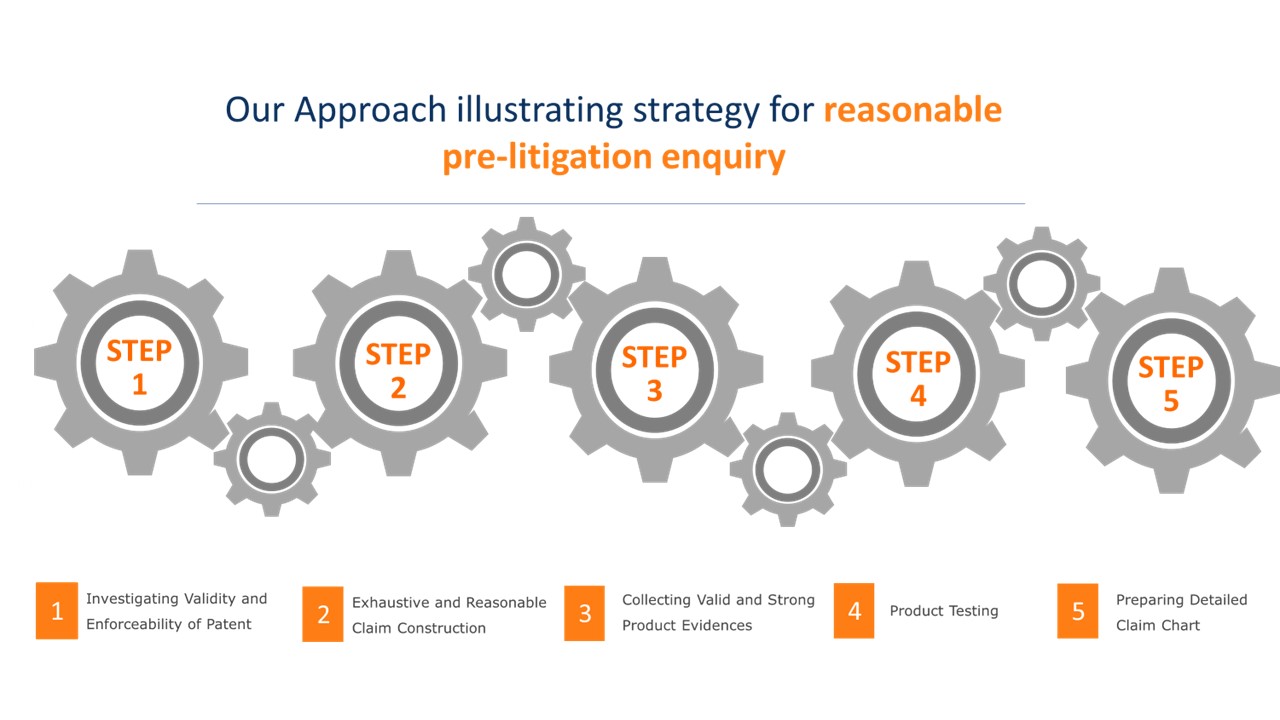Introduction
Patents are considered one of the important assets for an enterprise for generating revenue. One of the ways to generate revenue from the patent assets is to get money from infringers based on a court judgement in a lawsuit or an out-of-the court settlement. However, the out-of-the court settlement doesn’t always work. Also, while going for court litigation, getting the court judgement in your favor is also a tricky thing. Moreover, court proceedings often take a lot of time and involve drainage of energy and resources. Therefore, attorneys and patent owners need to be cautious before filing a patent infringement lawsuit. One such bottleneck that the plaintiff needs to be wary of during the patent infringement litigation is sanctions under Federal Rule of Civil Procedure 11, commonly known as Rule 11. The Rule 11 imposes an obligation on both the attorney and the patent owner to conduct a reasonable inquiry before filing the patent infringement lawsuit. Now let’s delve more into Rule 11.
Relevance of Rule 11 for infringement lawsuit
According to Rule 11, the attorney and the patent owner shall make a reasonable inquiry before filing the lawsuit so as to ensure that it is not being presented for any improper purpose, such as to harass, cause unnecessary delay, or needlessly increase the cost of litigation. Moreover, the factual contentions made in the litigation shall have evidentiary support and the denials of factual contentions by the defendant shall be warranted on the evidence.
Violation of Rule 11
Based on the statement of Rule 11, as described above, some of the common scenarios of violation of Rule 11 in a court of law include:
- The plaintiff files a patent lawsuit or refuses to withdraw infringement allegations when claim elements are clearly missing in an accused product.
- The defendant continues to contest infringement when one or more claims are clearly infringed by the accused product.
- Another important ground on which Rule 11 may be invoked, which seems less-likely to be considered by the plaintiff, is not investigating validity and enforceability of the asserted patent before suing for patent infringement. The following section describes an interesting lawsuit regarding this.
Some recent examples of penalty under Rule 11
- In WPEM, LLC, Plaintiff, v. SOTI INC., Defendant case, it was found by a district court of the USA that the plaintiff conducted no pre-filing investigation into the validity and enforceability of the asserted patent. They targeted SOTI’s technology that was later discovered to be a prior art against their own patent. The court penalized the plaintiff with an amount of $179,622.00 to award reasonable attorneys’ fees to the defendant under Rule 11 (Read more).
- In RAYLON, LLC, Plaintiff–Appellee, v. COMPLUS DATA INNOVATIONS, Co. et al, Defendants case, the Federal Circuit found that Raylon’s claim construction (and thus infringement contentions) were frivolous. Raylon’s claim construction was found to be contrary to all the intrinsic evidence and below the threshold of reasonableness. Moreover, Raylon relied on a single sentence in the specification to support its position and overbroadly construed certain claim limitation. On remand from the Federal Circuit, a Texas district court granted Rule 11 sanctions in the amount of $451,382 against plaintiff’s counsel for bringing a frivolous lawsuit on behalf of their client, Raylon LLC (Read more).
- Now, let’s also take an example where a motion from the defendant for sanctions on the Plaintiff under Rule 11 was denied by the Court. It would give us a fair idea of a conduct which doesn’t attract sanctions under Rule 11.
In KONECRANES GLOBAL CORPORATION, Plaintiff, v. MODE TECH (BEIJING) CO., LTD., Defendant case, the defendant moves for the Court to sanction Plaintiff’s counsel pursuant to Rule 11 because counsel failed to reverse engineer or examine accused products before filing the patent infringement lawsuit. The Court denied the defendant’s motion as Rule 11 does not impose a blanket standard that counsel must obtain accused products and dissect or reverse engineer a sample before filing a patent infringement lawsuit. However, to avoid dissecting or reverse engineering an accused product, the pre-litigation inquiry must be reasonable under the circumstances (Read more).
Repercussions of not abiding by Rule 11
Beyond the monetary sanctions, as we saw in the litigation cases mentioned above, violation of Rule 11 also wastes resources of the plaintiff. For example, there are direct costs involved in filing and during the litigation process, costs of investigation and discovery, and other resources as well. Moreover, it may consequently lead to losing the case if it is filed improperly or with the lack of evidentiary support.
“Reasonable Enquiry” to avoid sanctions under Rule 11
The reasonable pre-litigation enquiry is very crucial aspect to be considered before moving to court. Usually, the patent practitioners have a habit of starting the process right from claim construction. However, it may not be a good approach as we just learnt from one of the referred patent lawsuits. So, they should add another dimension as part of their strategy by conducting an analysis of validity and enforceability of the patent in question to begin with. If the patent turns out to be an invalid one, they may also consider pruning the patent thereby saving on annuities. After having asserted the validity and enforceability of the subject patent, the patent owner or attorney shall conduct an exhaustive and reasonable claim construction based on intrinsic and extrinsic evidence. A proper claim construction makes it easy to compare the claims with the accused product. Beyond these steps, they should also find the facts and relevant evidences related to the accused product. If a sample of the accused product is available at a nominal cost, the party shall not refrain from testing the accused product to make the case stronger.
By following the above strategy for pre-litigation enquiry, the plaintiff may avoid sanctions under Rule 11 and turn the tables on the defendant.








